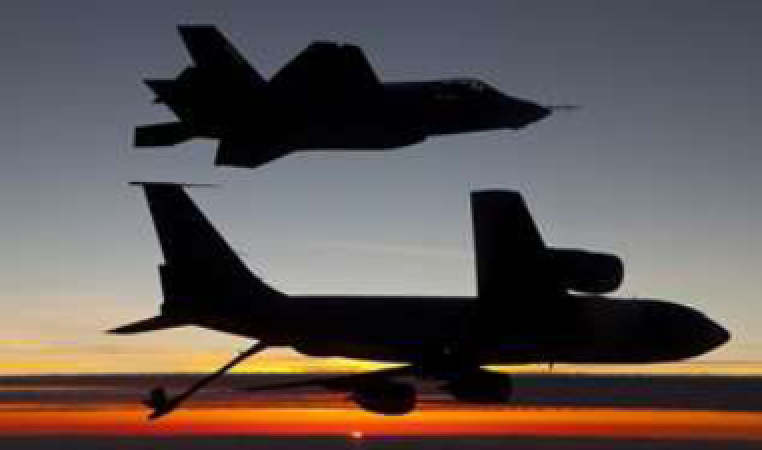2014/7/03 The F-35 is both cause and consequence of change in US and allied air power. The first Second Line of Defense publication, which addressed this, was called The Renorming of Air Power and the title was crafted to capture the interactivity between the new aircraft and new concepts of operations.
How will the USAF operate its C2 systems and re-shape its approaches as it rolls out its F-35 fleet and works with the emergence of a joint and coalition fleet of F-35s as well?
To gain insight into this dynamic, Second Line of Defense discussed the interactivity between the F-35 and evolving C2 systems and approaches with former USAF Colonel Robert Evans.
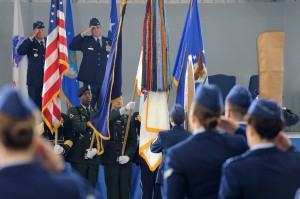
It is clear that Evans’ background as an Air Force officer and now industrialist provides him with significant operational insight into the challenges facing the USAF C2 approach.
According to Evans:
I retired from the Air Force in September 2012, after more than 28 years of service. I flew as a weapon systems officer on the F-111F and F-15E, and later had the opportunity to serve in a variety of command and control related positions, including leadership roles in Air Operations Centers in Germany, Korea and the Middle East.
I also served on the Air Staff and was privileged to command from the squadron to the wing level.
I started with Northrop Grumman in August of 2012, and I’m the Director of Strategy for the Command and Control Division in our Information Systems sector.
Question: When we talked with PACAF Commander “Hawk” Carlisle, it is clear that he is very concerned with shifting C2 approaches to allow the USAF to operate in a very flexible manner, included disaggregated and distributed operations. To succeed at this effort, clearly change in C2 is required.
How do you view the challenge?
Evans: I think there are three drivers of change for the USAF with regard to command and control.
The first are the enormous advances in technology that now enable the USAF to view the challenge of command and control in new ways.
We can now think about shifting from highly concentrated and capable centralized computer systems to distributed technologies.

Cloud computing, miniaturization, virtual machines, and ubiquitous networking are changing the technological foundations, and allowing the USAF to envision a true C2 enterprise.
The second is the growing threat, including challenges in cyberspace, to a centralized C2 system. Future adversaries will likely attack our command and control systems to degrade our combat capability, driving the need for increased resiliency in the scheme of C2.
The third is a renaissance in how some senior USAF officers are thinking about C2.
A perfect example is PACAF, where General Carlisle has made agile and flexible command and control a key element of his strategic plan. We’re seeing senior leaders open the dialogue about how they command and control air power.
In the past, the prime tenant of centralized command, decentralized execution was alone sufficient to describe the command and control paradigm.
Now warfighters are talking about centralized command, distributed control and decentralized execution … a subtle, but important change.
Question: A key change is moving beyond linear air power and sequential tasking which clearly challenges the classic USAF C2 paradigm.
How do you view the potential shift?
Evans: In the past, we might measure an Air Operations Center by the number of sorties it could task in an Air Tasking Order or ATO. We would talk about an AOC that had the capability to task a thousand-line ATO, a thousand sortie ATO, and that was kind of the measure of merit if you would.
The processes were designed to support sequential planning.
In other words, at some point in the process, we would conduct deliberate targeting, and in another point we would develop the master air attack plan.
At some other point, we would develop the actual tasking order, which would then be sent to the units to execute.
This process takes from 72 to 96 hours depending on where you begin, with joint force commander’s guidance or with the receipt of guidance at the air component.
This process, centered on detailed planning, was well-suited to the forces of that earlier era; because, our ability to see in the battlespace in real-time was limited, and, frankly, our ability to react was limited.
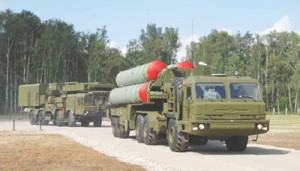
For example, during Desert Storm, if a Scud missile somewhere in the desert of Iraq, maybe emerging from an underground culvert or bridge emplacement, was moving into launch position, our ability to detect that was somewhat limited. It wasn’t a given that we could see that missile move or find it and track it.
But let’s assume that we did see it. Our ability to communicate that to an aircraft or a weapon system that could strike it with any certainty was limited. In the days before ubiquitous precision or even smart weapons, before GPS and before data links, it was a real challenge. If somebody had re-tasked an F-111, for example, or an F-16 to go find this mobile missile, the ability to strike it would be significantly limited.
Today, in contrast, our ability to see into the battlespace is incredible.
People talk about the data avalanche and information overload. The tremendous advances in intelligence, surveillance and reconnaissance capabilities now enable warfighters to see and understand the battlespace, and dynamic events, in a way that we couldn’t even dream of before. Their ability to see and sense in the battlespace from national sensors to tactical sensors is enormous, and that changes the way that we think about C2.
And furthermore, their ability to react to that is incredible.
Today, air component commanders we can easily task an aircraft with GPS-aided weapons, or other advanced capabilities, to strike emerging targets and exploit opportunities in the battlespace.
Unfortunately, potential adversaries have increased the challenge … it is more than just hunting Scuds.
Warfighters now must contend with the emergence of very highly advanced air defense threats, very lethal and highly mobile. To deal with these new threats, and take advantage of the capabilities of a modernized force, requires a highly agile C2 system.
The notion of taking down an Integrated Air Defense System … if the IADS comprises fixed sites that warfighters can collect on and map and image; then the legacy process is sufficient. If the IADS is in fact mobile and adaptive and resilient, then I would argue that that’s not the best way to do it.
So that’s another change, it’s collapsing the planning and execution cycles, driving toward a continuous planning and execution cycle, agile and flexible C2.
In the past, going back to the first order, we would have the air tasking order with deliberate targets, fixed targets assigned to packages, and perhaps that would change by something like 5 percent in execution.
In other words, 95 percent of what was planned would be flown exactly as tasked and those airplanes would hit those targets.
The delta, sorties that did not execute as planned, might be time-sensitive targeting, where something has popped up, perhaps it’s a Scud missile in the Desert Storm example.
And, we might re-task somebody to deal with that emergent threat. We would call that time-sensitive targeting or dynamic targeting depending on the target type in contrast to deliberate targeting which occurs earlier in the process, and it typically represented a small percentage of the total air effort
During Operation Odyssey Dawn, planners introduced a new term for targets that might emerge or be detected after the deliberate targeting phase had occurred, at a discrete time in the cycle. They weren’t so urgent that they had to be struck immediately, so they didn’t become time-sensitive targets to be struck immediately.
They were significant enough that they needed to be addressed before the next deliberate targeting phase, so they introduced this term “deliberate dynamic targeting” or “dynamic deliberate targeting”. That suggests that this sequential process as modified is no longer sufficient, and what we need is a much more dynamic and faster C2 cycle at the operation level.
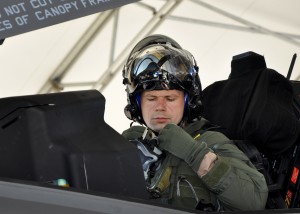
Warfighters must be able to take advantage of their increased ability to see and sense, and their increased ability to act, and do it with a speed of command that outpaces an adversary.
Another element that’s changed is the capabilities of individual platforms. The span or sphere of influence of an individual platform has dramatically increased.
In the past, a fighter had limited radar and we would stack radar coverage so that collectively you might see some space out in front of the formation. You would use AWACS to provide that longer look and help direct fighters to places they couldn’t see, but you could map very clearly what is the span of influence of that formation, and then you would task that entity or control it within what it could influence.
… Mission commanders or flight leads operating within their span of influence.
Question: What is the impact of the coming of the F-35 on C2?
Evans: It is very significant.
It brings an entirely new set of capabilities to the fight.
Although it can be tasked in exactly the same way a legacy fighter is tasked, by a legacy AOC that may not be the best way to exploit the capabilities it can bring.
It can see far beyond itself in 360-degree space and share situational awareness with others; it can fuse information to comprehend the nature of the battlespace and to determine the best means to achieve the commander’s intent. It can do far more than simply attack the tasked target and then return to base.
And it can magnify the capabilities of other assets … it makes the entire team better.
In football terms, the classic fighter pilot and squadron were like the college quarterback given plays sent in from the bench and tasked to execute along the lines set by the coach. Now the F-35 pilot and squadron will function more like Peyton Manning, coming to the line of scrimmage looking over the defense and determining where to attack and with which tools on his side of the ball.
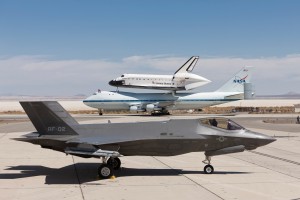
Now, the F-35 is like having Peyton Manning in every position.
To continue the analogy, formations of F-35s can work and share together so that they can “audible” the play. They can work together, sensing all that they can sense, fusing information, and overwhelming whatever defense is presented to them in a way that the legacy command and control simply cannot keep up with, nor should keep up with.
That’s what F-35 brings.
If warfighters were to apply the same C2 approach used for traditional airpower to the F-35 they would really be missing the point of what the F-35 fleet can bring to the future fight.
In the future, they might task the F-35 fleet to operate in the battlespace and affect targets that they believe are important to support the commander’s strategy, but while those advanced fighters are out there, they can collaborate with other forces in the battlespace to support broader objectives.
The F-35 pilot could be given much broader authorities and wields much greater capabilities, so the tasks could be less specific and more broadly defined by mission type orders, based on the commander’s intent. He will have the ability to influence the battlespace not just within his specific package, but working with others in the battlespace against broader objectives.
Collaboration is greatly enhanced, and mutual support is driven to entirely new heights.
The F-35 pilot in the future becomes in some ways, an air battle manager, or a Peyton Manning-style quarterback who is really participating in a much more advanced offense, if you will, than did the aircrews of the legacy generation.
And going back to my comment about the convergence of planning and execution, and a warfighter’s ability to see and sense in the battlespace … that’s only relevant if you take advantage of it, and the F-35 certainly allows warfighters to take advantage of it.
You don’t want to have a fifth-generation Air Force, shackled by a third-generation system of command and control.
Question: To be clear, the F-35 fleet and its pilots are not operating without guidance, but really what is changing is how tasking and command and control will operate.
How would you describe this shift?
Evans: I think the way you can task F-35 formations and capabilities in the future is through formulating and communicating commander’s intent.
What are the boundaries and constraints? What level of risk is the commander willing to accept? What are those things I want you to look for and exploit?
Today, warfighters define time-sensitive targets very specifically. They’re approved by the joint force commander who says, “If you see this, this or this, those are time-sensitive targets. You strike them using the most expeditious means, with all necessary resources.”
And so now, if a formation on its way to the target, detects one of those targets “this, this, or this,” then they attack it, because the joint force commander has told them it is of higher value and, very likely, an immediate threat.
I think an F-35 in the future will operate a little more broadly than that.
What are the effects the commander is trying to achieve in the battlespace, and does he now have the ability to influence those effects? The Commander may task an F-35 sortie differently than an F-16, in order to fully exploit its tremendous capabilities.
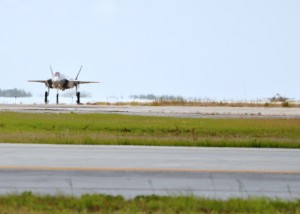
Question: We clearly are taking about the F-35 as a driver for change, but the broader point is that the evolution or perhaps significant shift in the approach and technologies to do C2 is equally important. How do you view the C2 side of the technological equation?Evans: The emergence of technologies that allow warfighters to see in the battlespace in a way they couldn’t before, gives us an opportunity to enable commanders at lower levels to exercise more control.
Warfighters recognize that a single point failure in a command and control system could be catastrophic. They are dependent on command and control, because that’s how they control the application of lethal force to support national objectives. If they have a system that’s fragile then that’s just unacceptable. This is particularly so against an adversary that can threaten a centralized C2 system.
The concept of dispersing aircraft on airfields is well understood. Rather than park them wingtip-to-wingtip, commanders might disperse them across broader geographies, so that at worst case, an adversary could take out one or two airplanes, not the entire fleet. And this idea of dispersing for survival is well accepted.
But the same kind of concept is not generally applied to command and control at the operational-level with the same level of effort.
Dispersing command and control for survival or distributing command and control in a way that one can pick up the slack is essential.
If the CAOC goes away and the Joint Force Air Component Commander is unable to C2 the forces, then, who are the subordinate commanders?
And, and what ability do they have to continue to fight in terms of operational-level command and control?
For the current fight, the tactical-level C2 elements, the air battle managers on board the AWACS for example, will continue to fight the current fight. But, what happens next?
And so, I think a wing commander in the future will have to have ability, in the same way a brigade commander does in land warfare, to exercise appropriate command and control over his forces absent the higher authority … centralized command, distributed control, decentralized execution … mission command for the air component.
Editor’s Note: For additional sources regarding the evolution of air combat systems and related issues see the following:
https://sldinfo.com/the-pacaf-commander-and-reworking-pacific-defense-the-aor-will-become-a-caoc/
https://sldinfo.com/shaping-the-way-ahead-for-airpower-general-hostage-focuses-on-the-future/
https://sldinfo.com/download-pdf-the-us-vs-ussr-in-tacair-lessons-learned-from-a-hot-cold-war/
https://sldinfo.com/re-norming-the-asymmetric-advantage-in-air-dominance/
https://sldinfo.com/flipbooks/Renorming%20Air%20Power/RenormingAirPower/
http://www.au.af.mil/au/afri/aspj/digital/pdf/articles/2014-Jul-Aug/SLP-Deptula.pdf?source=GovD


